Abstract
A model for left ventricular diastolic mechanics is formulated that takes into account noneligible wall thickness, incompressibility, finite deformation, nonlinear elastic effects, and the known fiber architecture of the ventricular wall. The model consists of a hollow cylindrical mass of muscle bound between two plates of negligible mass. The wall contains fiber elements that follow a helical course and carry only axial tension. The fiber angle (i.e., helical pitch) is constant along the length of each fiber but varies through the wall in accordance with the known distribution of fiber orientations in the canine left ventricle. To simplify the analysis and reduce the number of degrees of freedom, the anatomic distribution of fiber orientations is divided into a clockwise and counterclockwise system. The reference configuration for the model corresponds to a state in which, by hypothesis, the transmural pressure gradient is zero, the tension is zero for all fibers across the wall, and all fibers are assumed to have a sarcomere length of 1.9 micrometer. This choice of reference configuration is based on the empirical evidence that canine ventricles, fixed in a state of zero transmural pressure gradient and dissected, demonstrate sarcomere lengths between 1.9 and 2.0 micrometer in inner, middle, and outer wall layers, while isolated ventricular muscle bundles are observed to have zero resting tension when the sarcomere length ranges from 1.9 to 2.0 micrometer. An equation representing the global condition for equilibrium is derived and solved numerically. It is found that the model's pressure-volume relation is representative of diastolic filling in vivo over a wide range of filling pressures, and the calculated midwall sarcomere lengths in the model compare favorably with published experimental data. Subendocardial fibers are stretched beyond Lmax even at low filling pressures, i.e., 5 mm Hg, while fibers located between 60-80% of wall thickness extend minimally between 5 and 12 mm Hg. The hydrostatic pressure field within the wall is highly nonlinear. The pressure rises steeply in the subendocardial layers so that the net gain in pressure in the inner third of the wall is 85% of the filling pressure. It is demonstrated that these results are independent of heart size for a family of heart models that are scale models of each other. They are, however, critically dependent on the existence of longitudinally oriented fibers in the endocardial and epicardial regions of heart wall.
Full text
PDF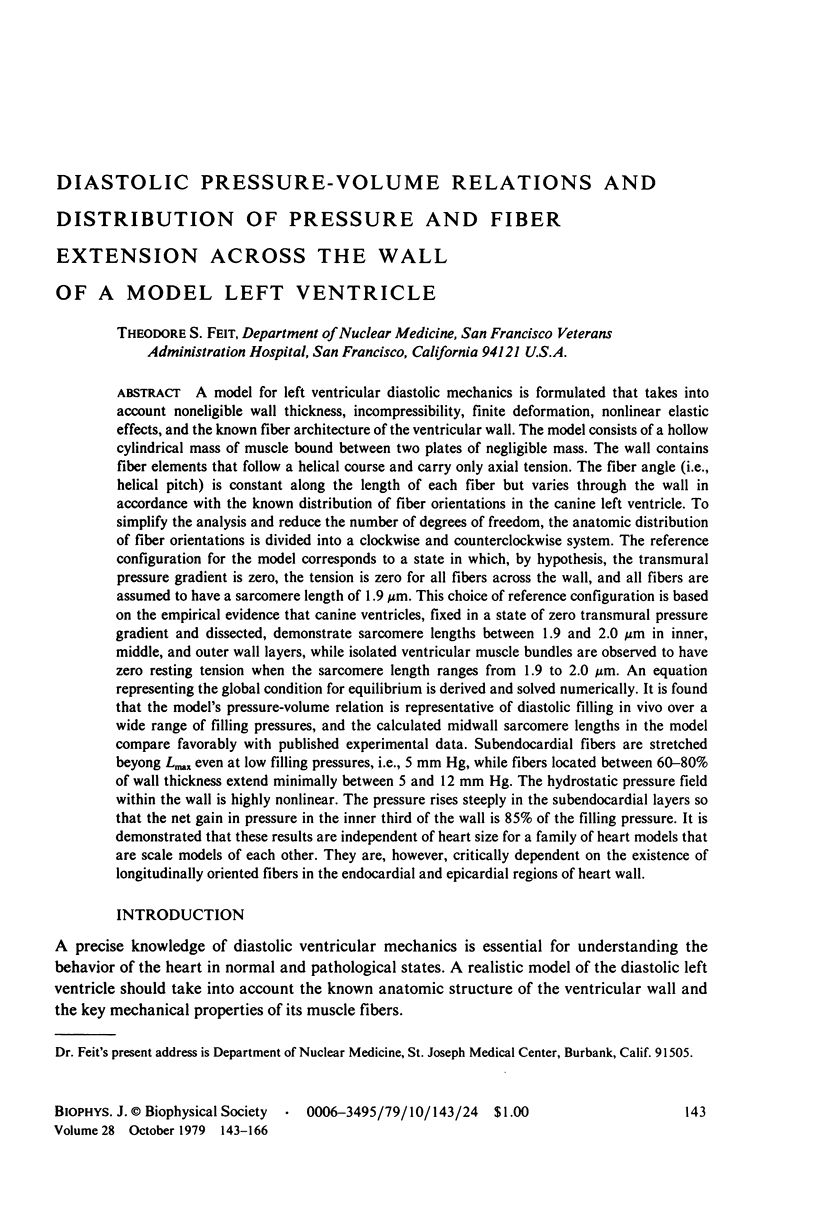


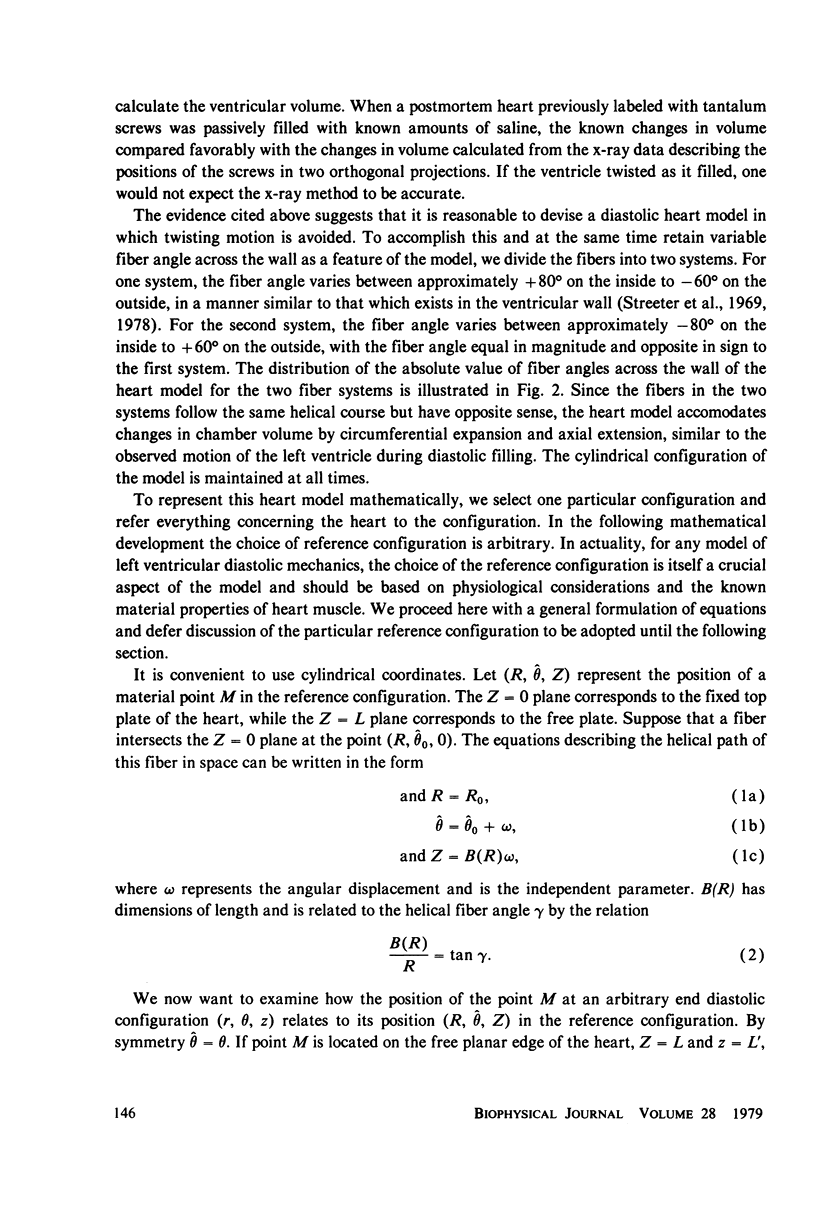
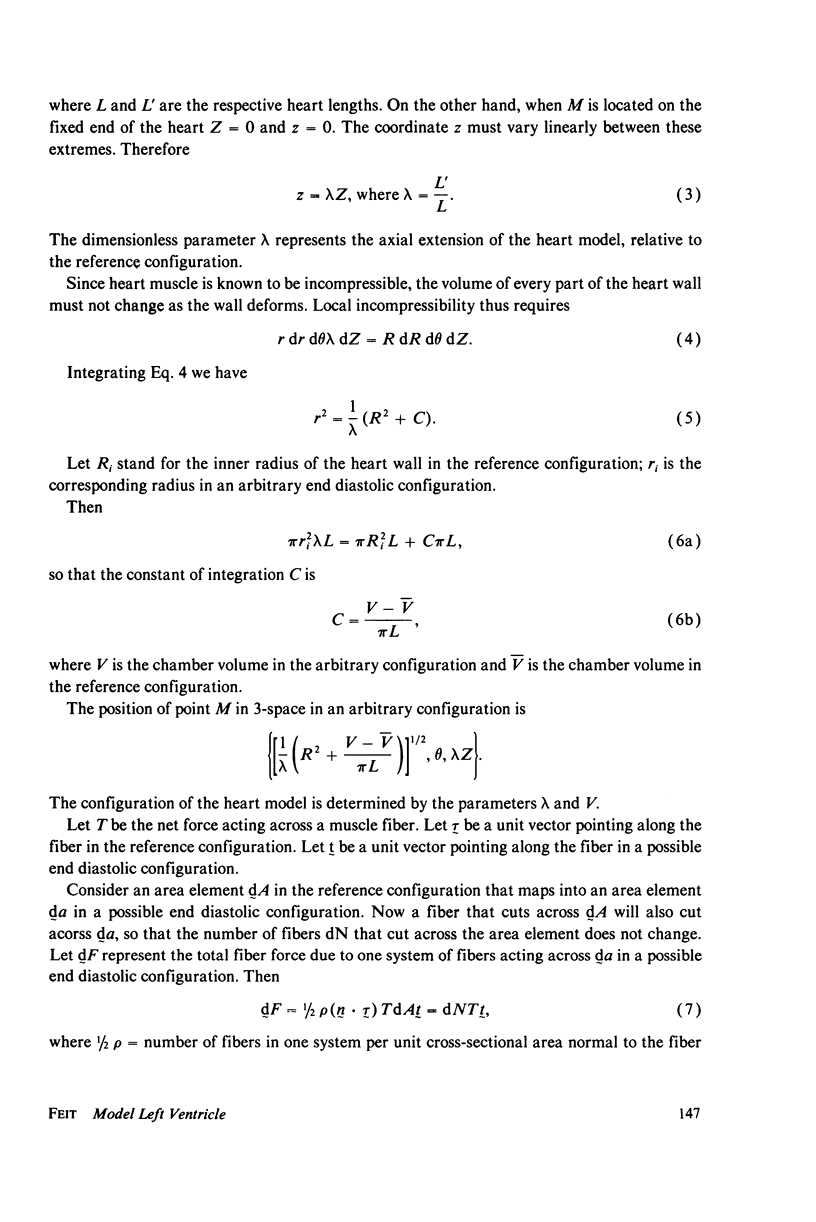
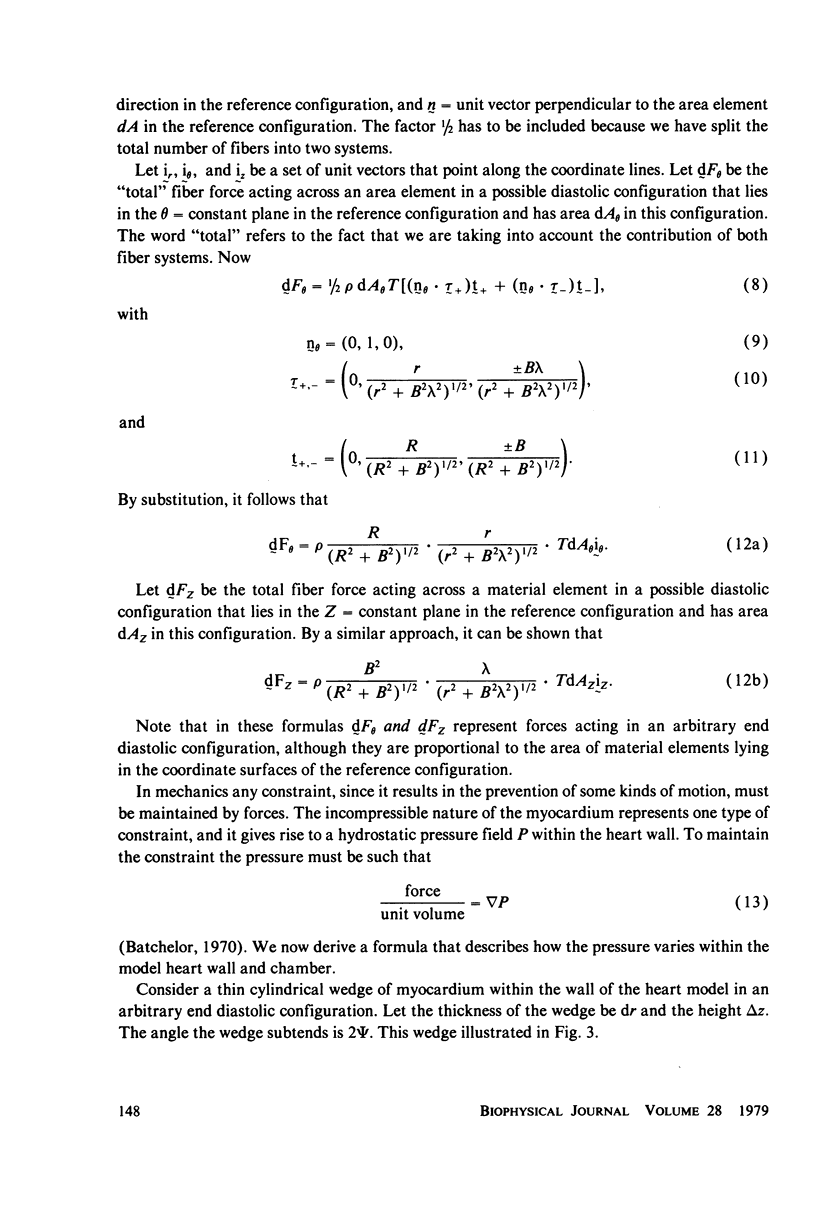

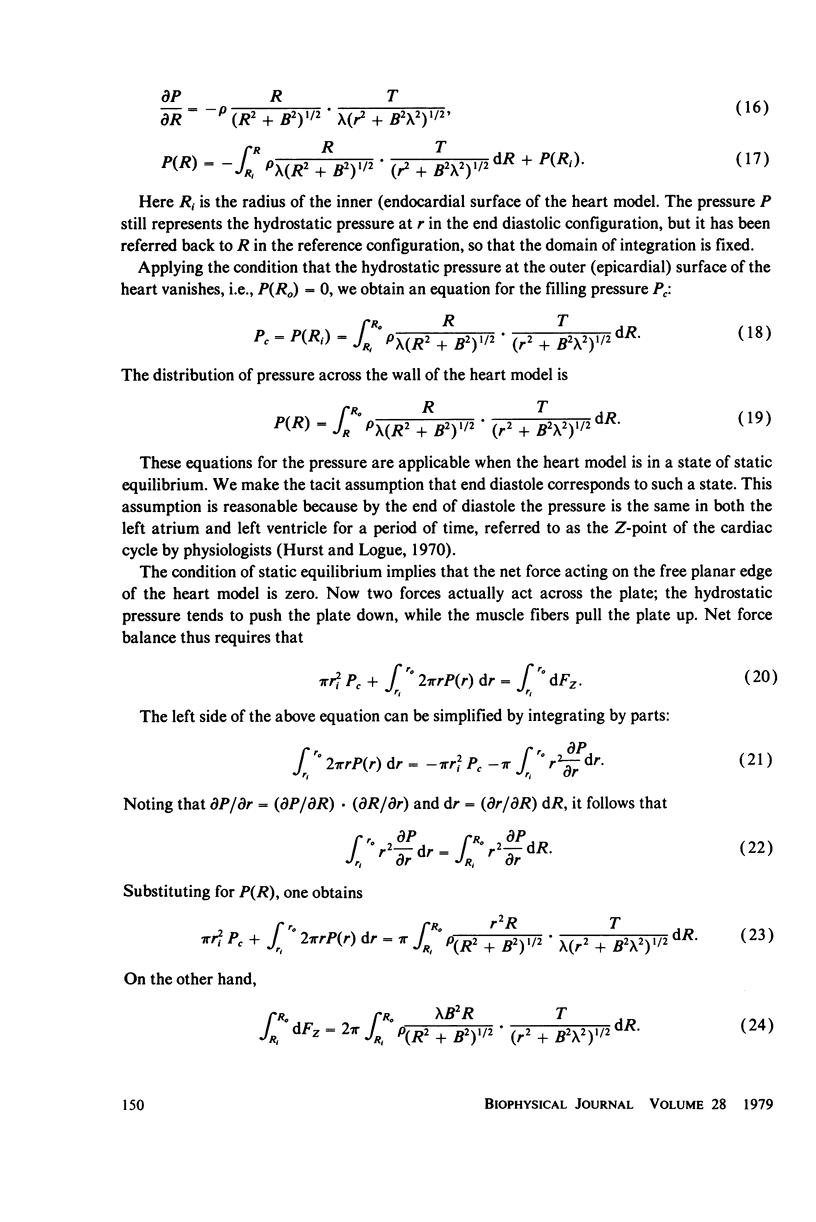
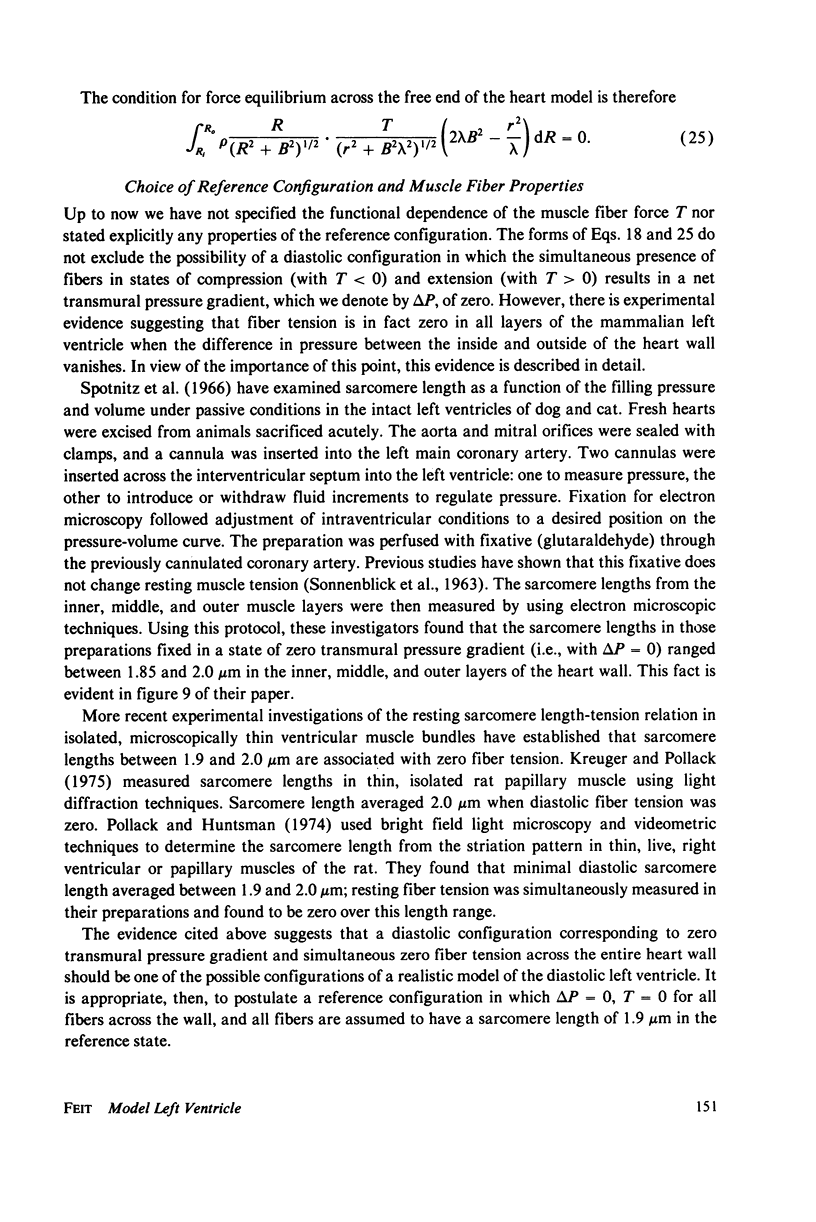
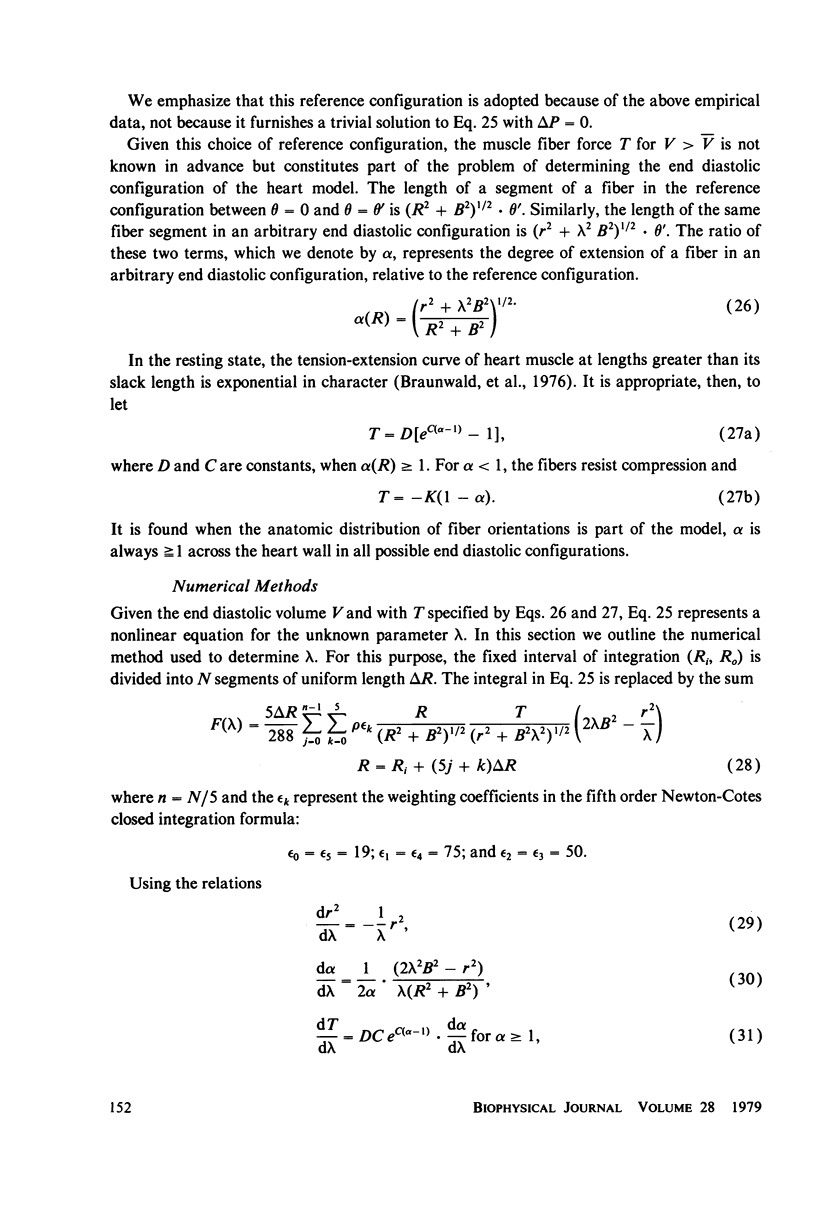
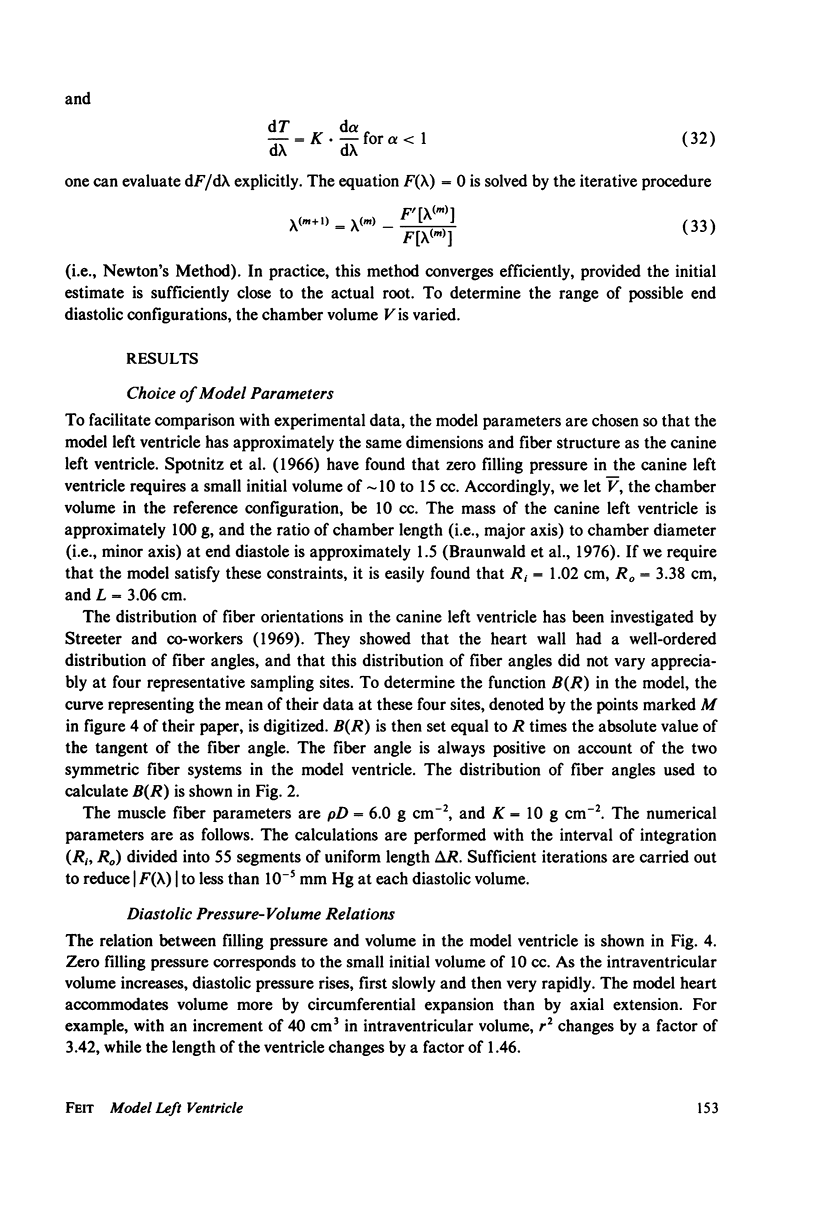

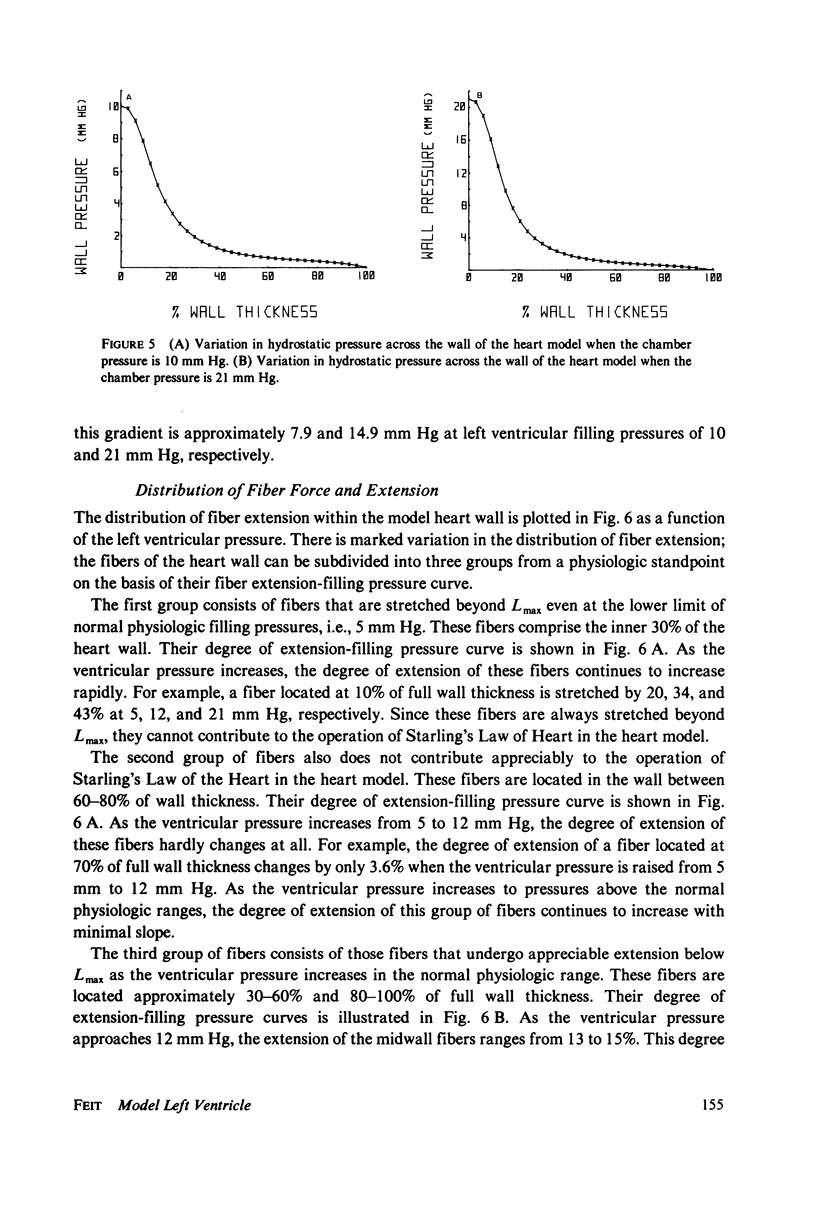

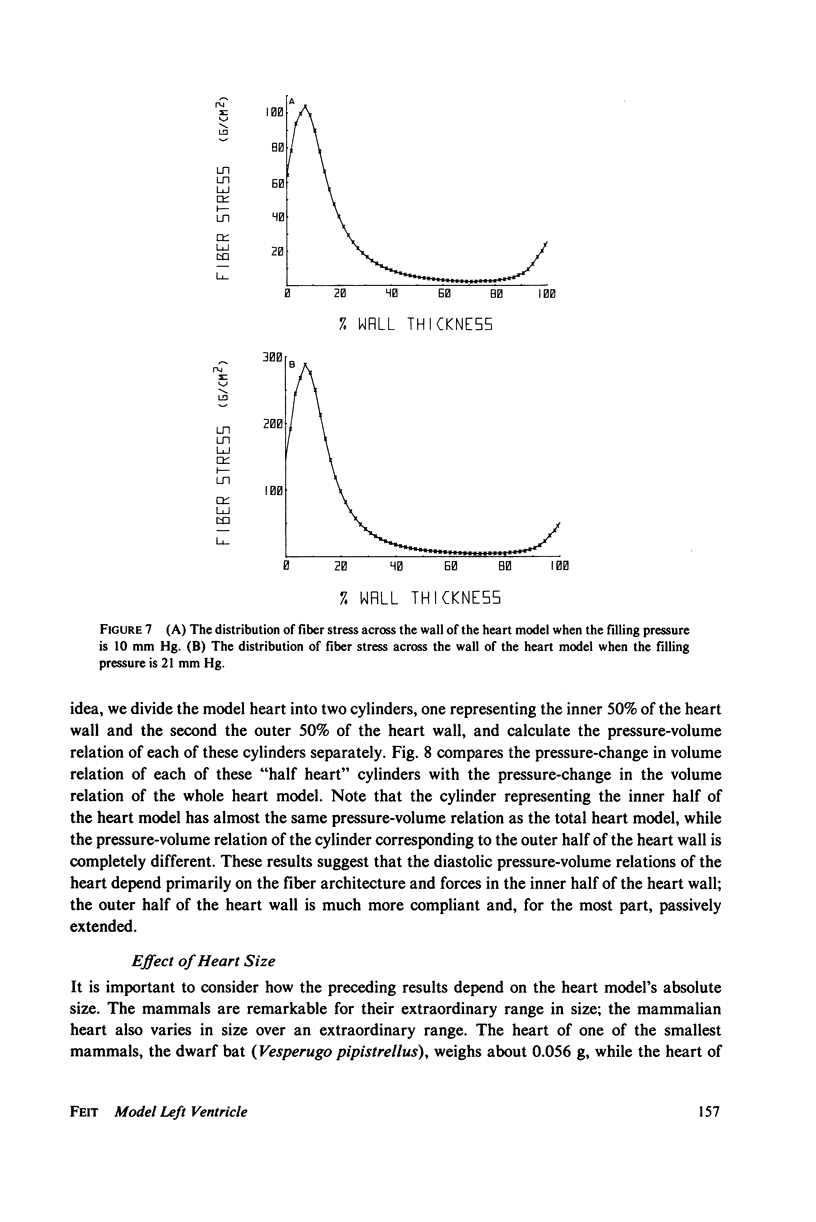
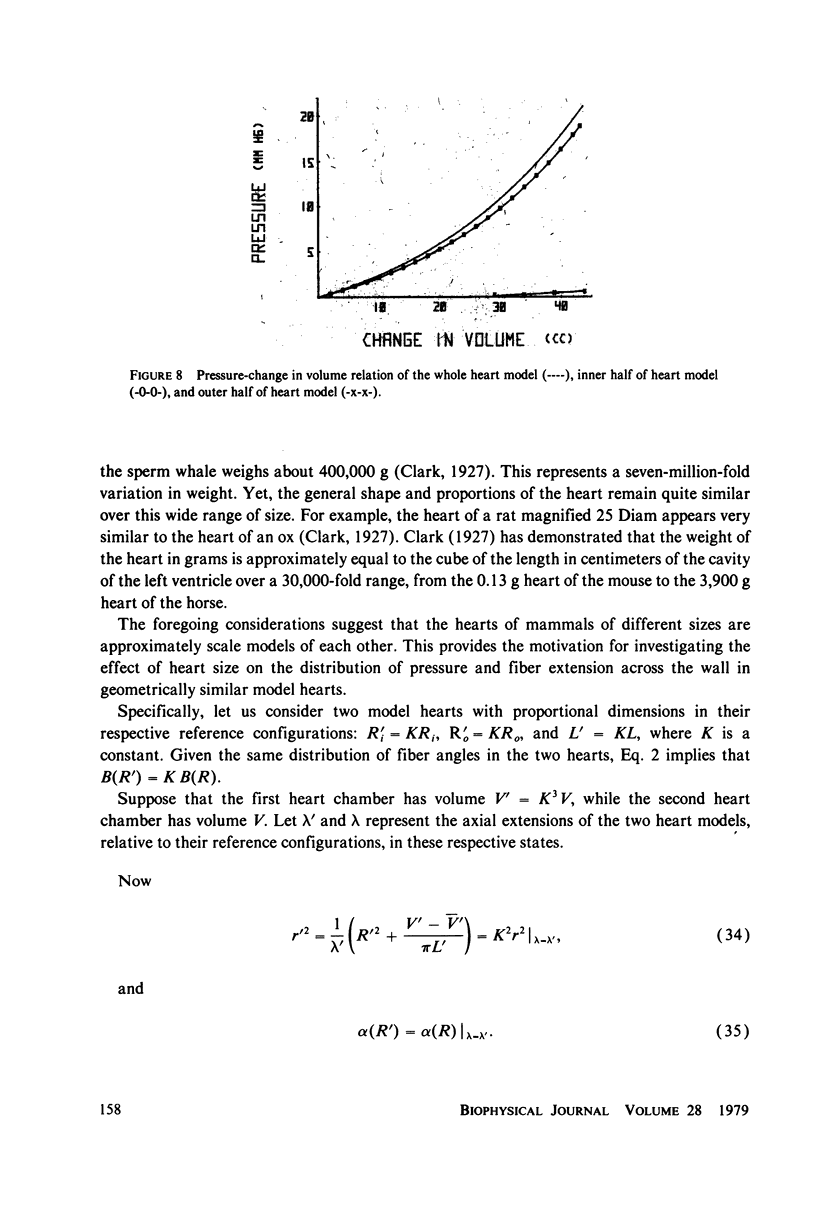

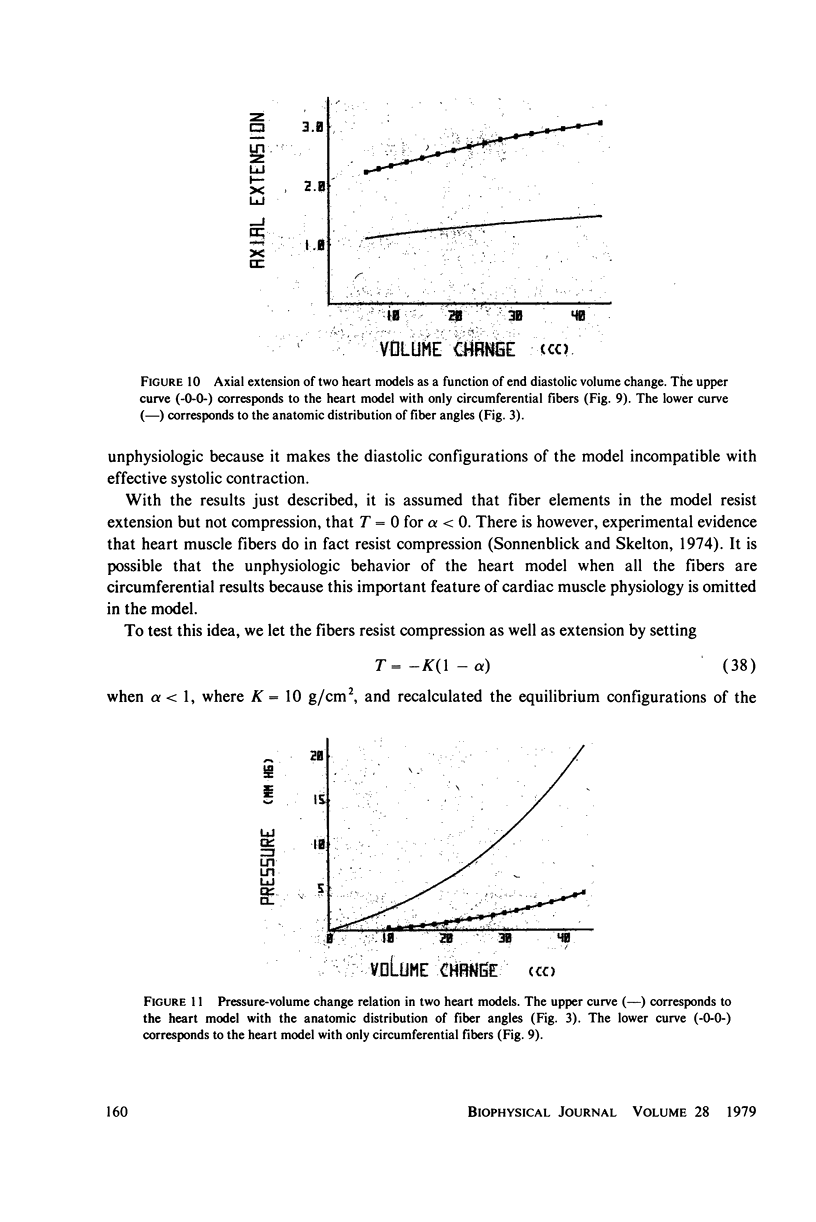
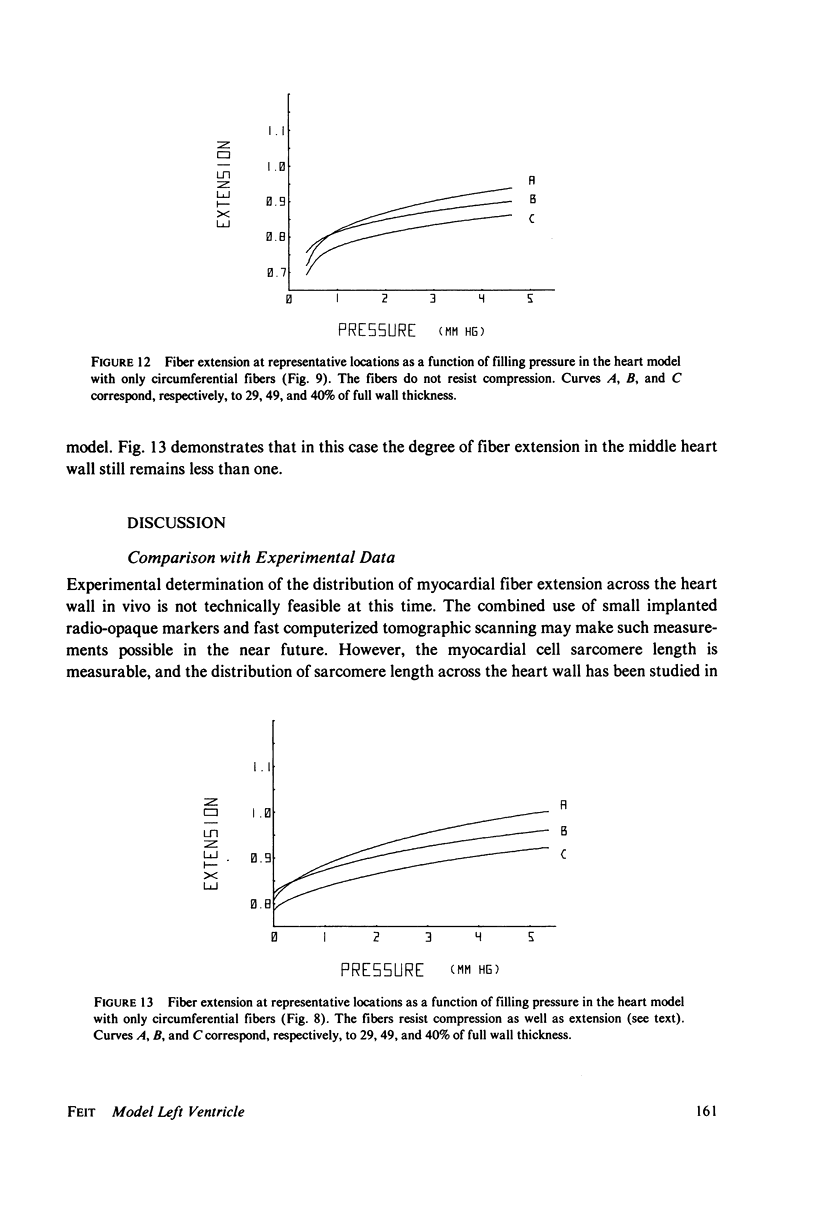
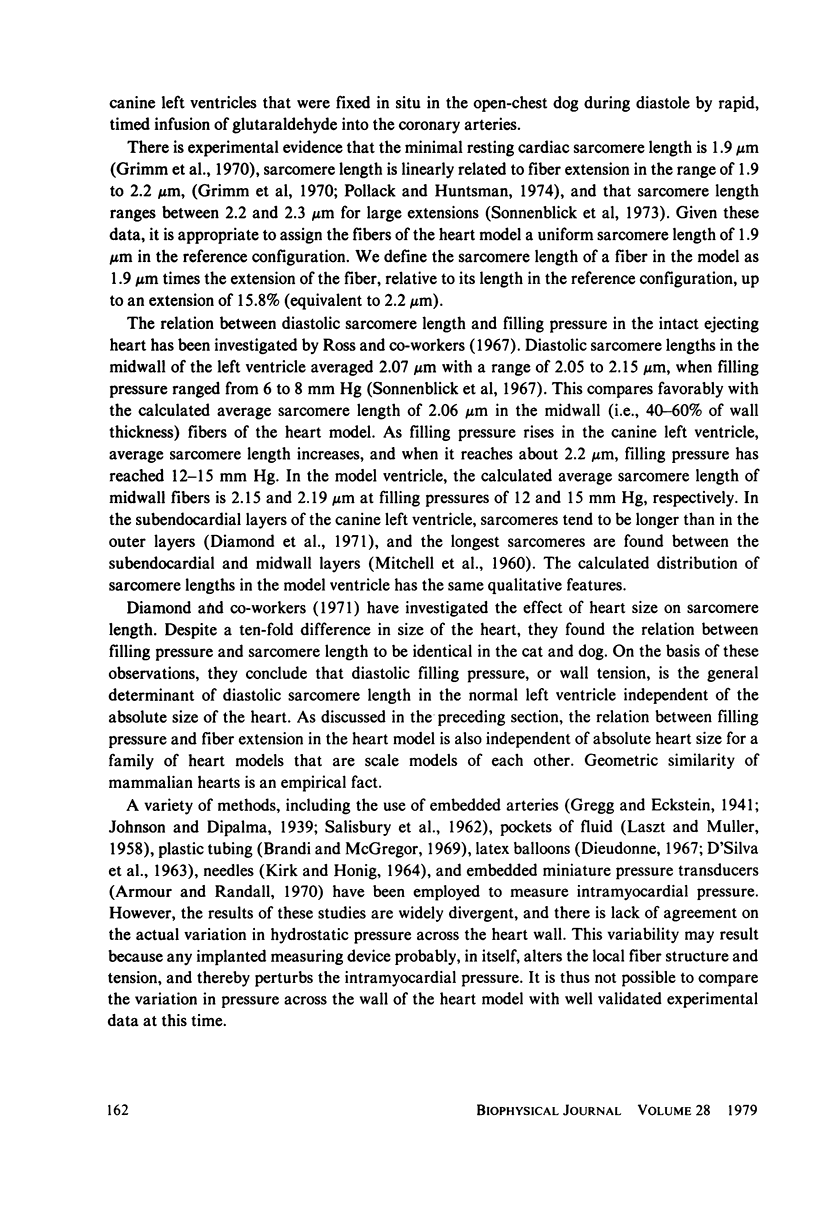
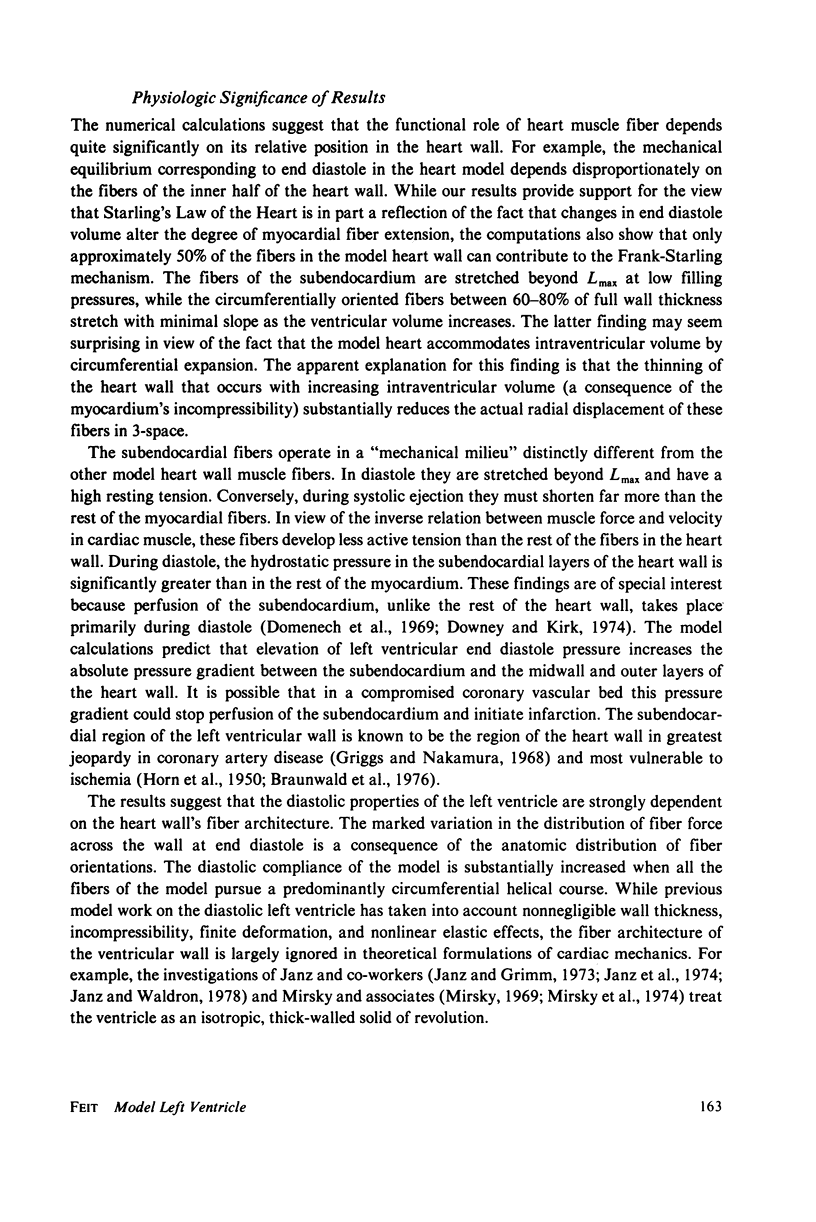
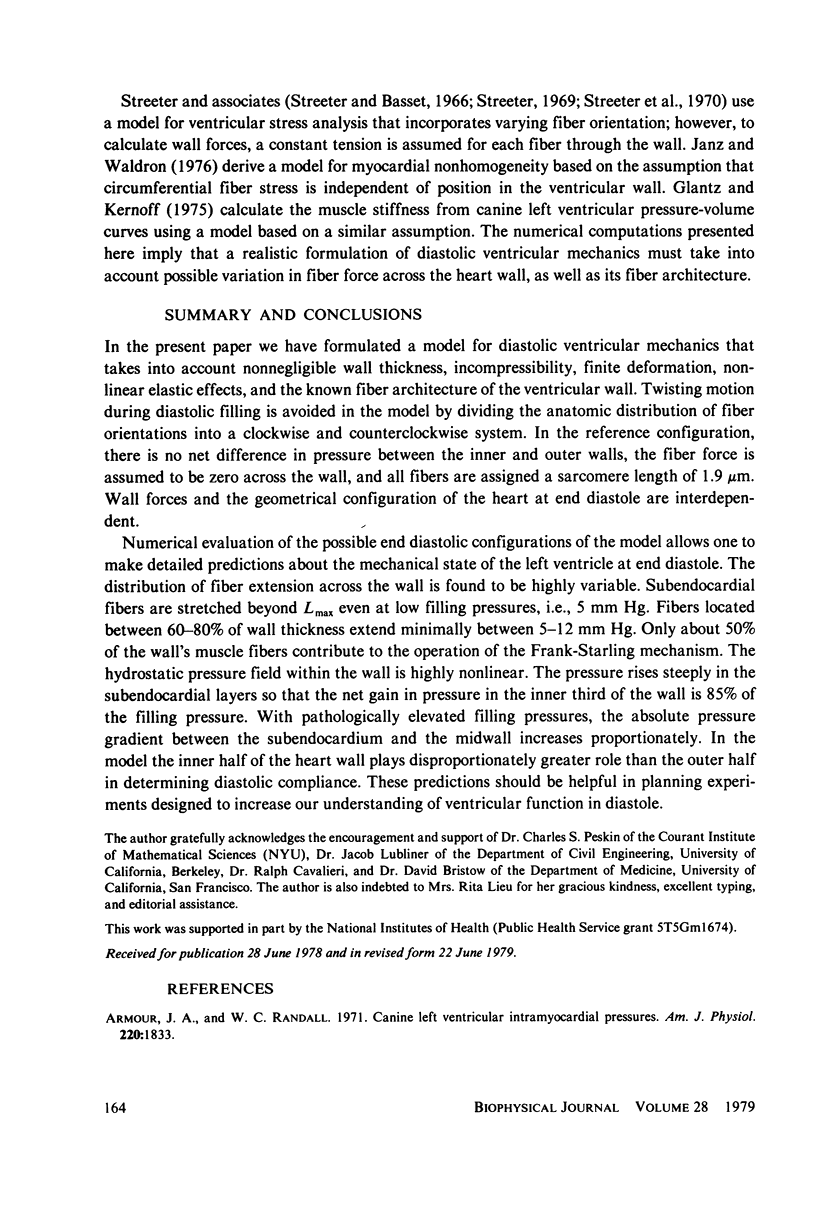
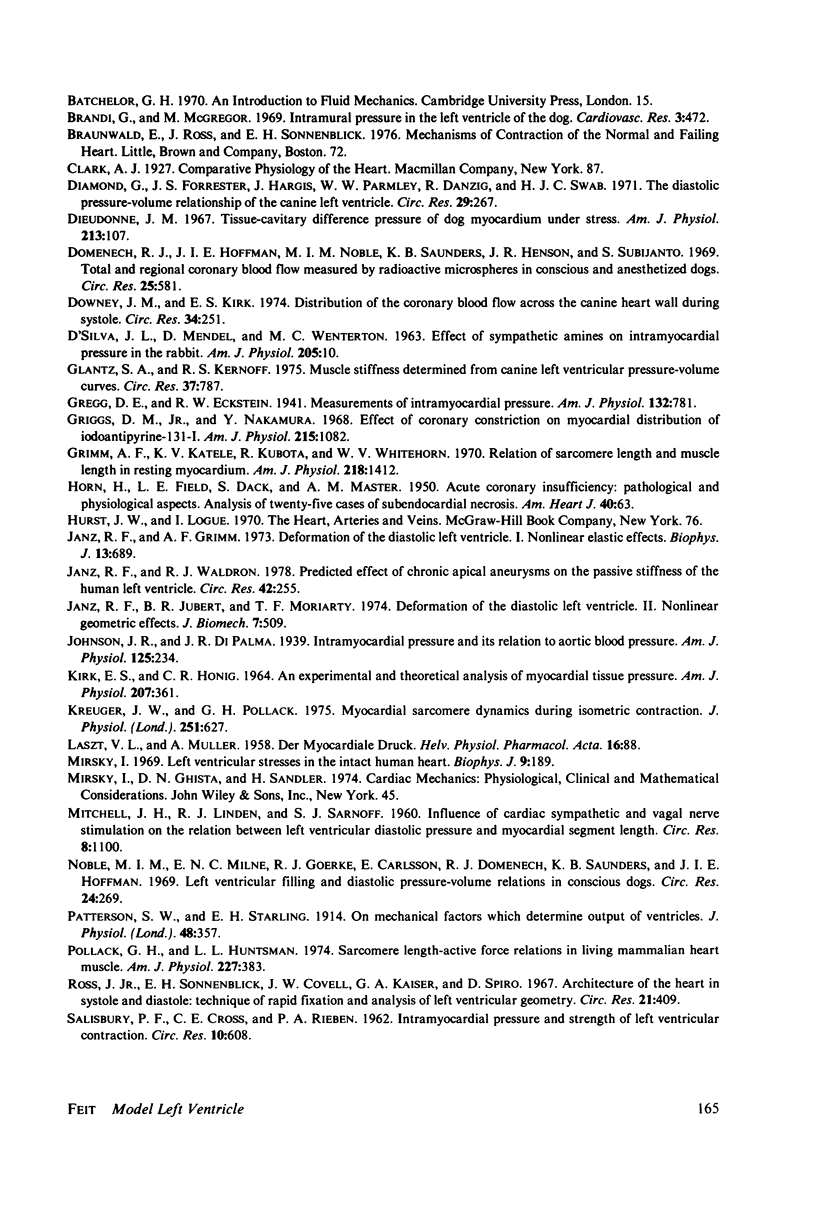
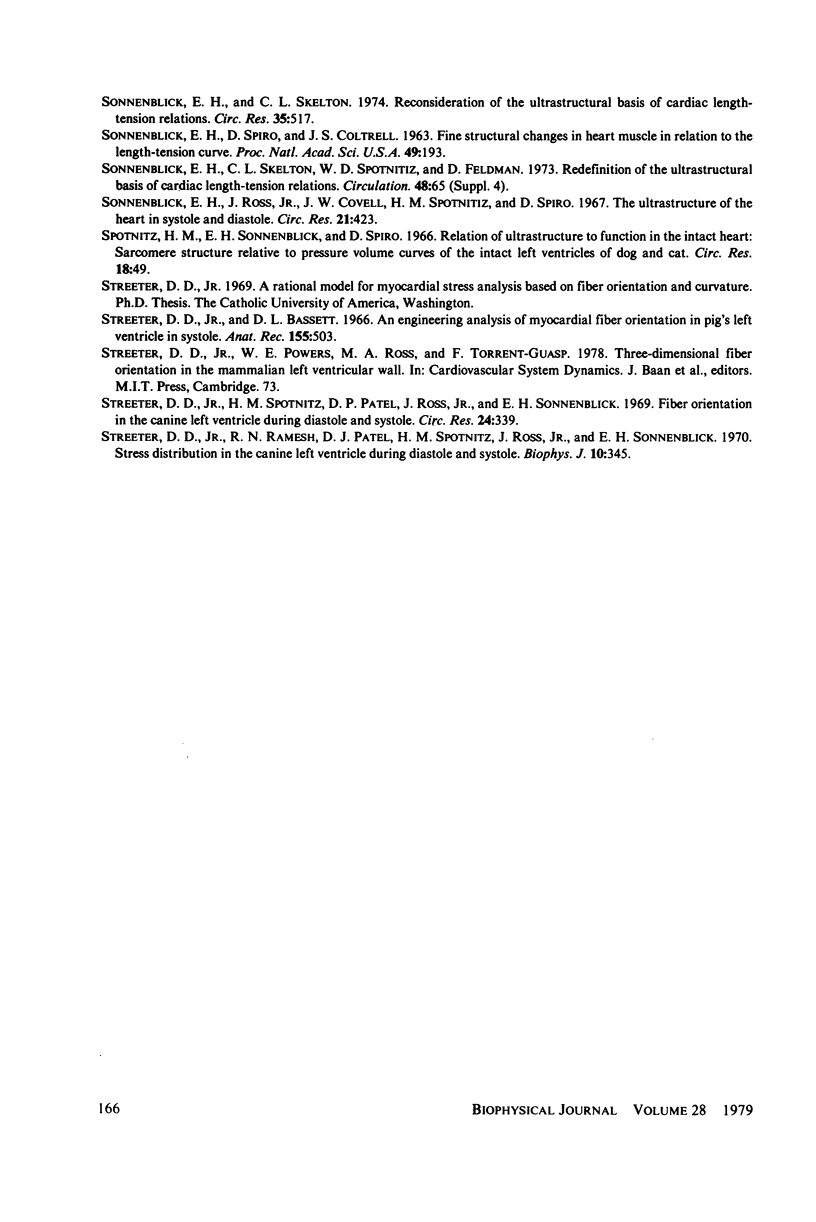
Selected References
These references are in PubMed. This may not be the complete list of references from this article.
- Armour J. A., Randall W. C. Canine left ventricular intramyocardial pressures. Am J Physiol. 1971 Jun;220(6):1833–1839. doi: 10.1152/ajplegacy.1971.220.6.1833. [DOI] [PubMed] [Google Scholar]
- Brandi G., McGregor M. Intramural pressure in the left ventricle of the dog. Cardiovasc Res. 1969 Oct;3(4):472–475. doi: 10.1093/cvr/3.4.472. [DOI] [PubMed] [Google Scholar]
- Diamond G., Forrester J. S., Hargis J., Parmley W. W., Danzig R., Swan H. J. Diastolic pressure-volume relationship in the canine left ventricle. Circ Res. 1971 Sep;29(3):267–275. doi: 10.1161/01.res.29.3.267. [DOI] [PubMed] [Google Scholar]
- Dieudonné J. M. Tissue-cavitary difference pressure of dog myocardium under stress. Am J Physiol. 1967 Jul;213(1):107–111. doi: 10.1152/ajplegacy.1967.213.1.107. [DOI] [PubMed] [Google Scholar]
- Domenech R. J., Hoffman J. I., Noble M. I., Saunders K. B., Henson J. R., Subijanto S. Total and regional coronary blood flow measured by radioactive microspheres in conscious and anesthetized dogs. Circ Res. 1969 Nov;25(5):581–596. doi: 10.1161/01.res.25.5.581. [DOI] [PubMed] [Google Scholar]
- Downey J. M., Kirk E. S. Distribution of the coronary blood flow across the canine heart wall during systole. Circ Res. 1974 Feb;34(2):251–257. doi: 10.1161/01.res.34.2.251. [DOI] [PubMed] [Google Scholar]
- Glantz S. A., Kernoff R. S. Muscle stiffness determined from canine left ventricular pressure-volume curves. Circ Res. 1975 Dec;37(6):787–794. doi: 10.1161/01.res.37.6.787. [DOI] [PubMed] [Google Scholar]
- Griggs D. M., Jr, Nakamura Y. Effect of coronary constriction on myocardial distribution of iodoantipyrine-131-I. Am J Physiol. 1968 Nov;215(5):1082–1086. doi: 10.1152/ajplegacy.1968.215.5.1082. [DOI] [PubMed] [Google Scholar]
- Grimm A. F., Katele K. V., Kubota R., Whitehorn W. V. Relation of sarcomere length and muscle length in resting myocardium. Am J Physiol. 1970 May;218(5):1412–1416. doi: 10.1152/ajplegacy.1970.218.5.1412. [DOI] [PubMed] [Google Scholar]
- HORN H., FIELD L. E., DACK S., MASTER A. M. Acute coronary insufficiency: pathological and physiological aspects; an analysis of twenty-five cases of subendocardial necrosis. Am Heart J. 1950 Jul;40(1):63–80. doi: 10.1016/0002-8703(50)90150-5. [DOI] [PubMed] [Google Scholar]
- Janz R. F., Grimm A. F. Deformation of the diastolic left ventricle. Nonlinear elastic effects. Biophys J. 1973 Jul;13(7):689–704. doi: 10.1016/s0006-3495(73)86015-1. [DOI] [PMC free article] [PubMed] [Google Scholar]
- Janz R. F., Kubert B. R., Moriarty T. F., Grimm A. F. Deformation of the diastolic left ventricle--II. Nonlinear geometric effects. J Biomech. 1974 Nov;7(6):509–516. doi: 10.1016/0021-9290(74)90085-2. [DOI] [PubMed] [Google Scholar]
- Janz R. F., Waldron R. J. Predicted effect of chronic apical aneurysms on the passive stiffness of the human left ventricle. Circ Res. 1978 Feb;42(2):255–263. doi: 10.1161/01.res.42.2.255. [DOI] [PubMed] [Google Scholar]
- KIRK E. S., HONIG C. R. AN EXPERIMENTAL AND THEORETICAL ANALYSIS OF MYOCARDIAL TISSUE PRESSURE. Am J Physiol. 1964 Aug;207:361–367. doi: 10.1152/ajplegacy.1964.207.2.361. [DOI] [PubMed] [Google Scholar]
- Krueger J. W., Pollack G. H. Myocardial sarcomere dynamics during isometric contraction. J Physiol. 1975 Oct;251(3):627–643. doi: 10.1113/jphysiol.1975.sp011112. [DOI] [PMC free article] [PubMed] [Google Scholar]
- LASZT L., MULLER A. Der myokardiale Druck. Helv Physiol Pharmacol Acta. 1958;16(2):88–106. [PubMed] [Google Scholar]
- MITCHELL J. H., LINDEN R. J., SARNOFF S. J. Influence of cardiac sympathetic and vagal nerve stimulation on the relation between left ventricular diastolic pressure and myocardial segment length. Circ Res. 1960 Sep;8:1100–1107. doi: 10.1161/01.res.8.5.1100. [DOI] [PubMed] [Google Scholar]
- Mirsky I. Left ventricular stresses in the intact human heart. Biophys J. 1969 Feb;9(2):189–208. doi: 10.1016/S0006-3495(69)86379-4. [DOI] [PMC free article] [PubMed] [Google Scholar]
- Noble M. I., Milne E. N., Goerke R. J., Carlsson E., Domenech R. J., Saunders K. B., Hoffman J. I. Left ventricular filling and diastolic pressure-volume relations in the conscious dog. Circ Res. 1969 Feb;24(2):269–283. doi: 10.1161/01.res.24.2.269. [DOI] [PubMed] [Google Scholar]
- Patterson S. W., Starling E. H. On the mechanical factors which determine the output of the ventricles. J Physiol. 1914 Sep 8;48(5):357–379. doi: 10.1113/jphysiol.1914.sp001669. [DOI] [PMC free article] [PubMed] [Google Scholar]
- Pollack G. H., Huntsman L. L. Sarcomere length-active force relations in living mammalian cardiac muscle. Am J Physiol. 1974 Aug;227(2):383–389. doi: 10.1152/ajplegacy.1974.227.2.383. [DOI] [PubMed] [Google Scholar]
- Ross J., Jr, Sonnenblick E. H., Covell J. W., Kaiser G., Spiro D. The architecture of the heart in systole and diastole. Technique of rapid fixation and analysis of left ventricular geometry. Circ Res. 1967 Oct;21(4):409–421. doi: 10.1161/01.res.21.4.409. [DOI] [PubMed] [Google Scholar]
- SALISBURY P. F., CROSS C. E., RIEBEN P. A. Intramyocardial pressure and strength of left ventricular contraction. Circ Res. 1962 Apr;10:608–623. doi: 10.1161/01.res.10.4.608. [DOI] [PubMed] [Google Scholar]
- SONNENBLICK E. H., SPIRO D., COTTRELL T. S. Fine structural changes in heart muscle in relation of the lengthtension curve. Proc Natl Acad Sci U S A. 1963 Feb 15;49:193–200. doi: 10.1073/pnas.49.2.193. [DOI] [PMC free article] [PubMed] [Google Scholar]
- Sonnenblick E. H., Ross J., Jr, Covell J. W., Spotnitz H. M., Spiro D. The ultrastructure of the heart in systole and diastole. Chantes in sarcomere length. Circ Res. 1967 Oct;21(4):423–431. doi: 10.1161/01.res.21.4.423. [DOI] [PubMed] [Google Scholar]
- Sonnenblick E. H., Skelton C. L. Reconsideration of the ultrastructural basis of cardiac length-tension relations. Circ Res. 1974 Oct;35(4):517–526. doi: 10.1161/01.res.35.4.517. [DOI] [PubMed] [Google Scholar]
- Streeter D. D., Jr, Spotnitz H. M., Patel D. P., Ross J., Jr, Sonnenblick E. H. Fiber orientation in the canine left ventricle during diastole and systole. Circ Res. 1969 Mar;24(3):339–347. doi: 10.1161/01.res.24.3.339. [DOI] [PubMed] [Google Scholar]
- Streeter D. D., Jr, Vaishnav R. N., Patel D. J., Spotnitz H. M., Ross J., Jr, Sonnenblick E. H. Stress distribution in the canine left ventricle during diastole and systole. Biophys J. 1970 Apr;10(4):345–363. doi: 10.1016/S0006-3495(70)86306-8. [DOI] [PMC free article] [PubMed] [Google Scholar]


